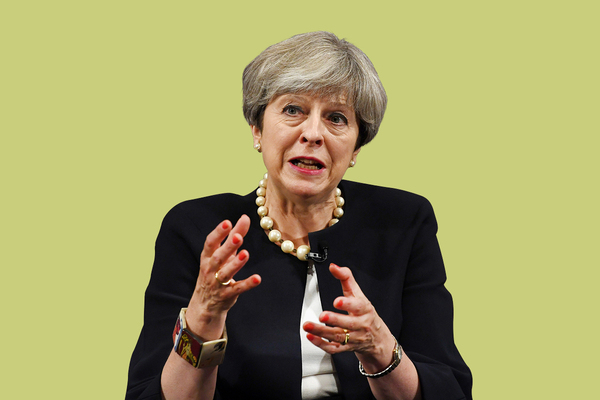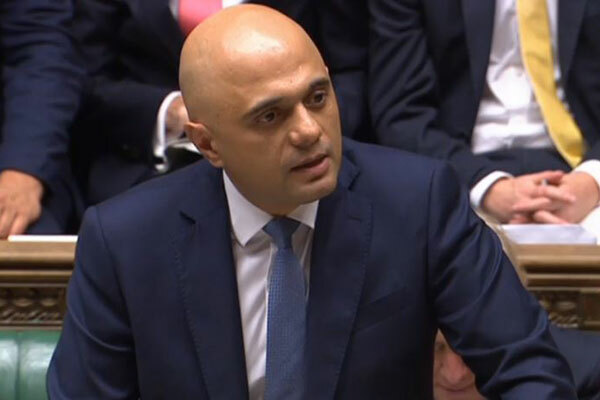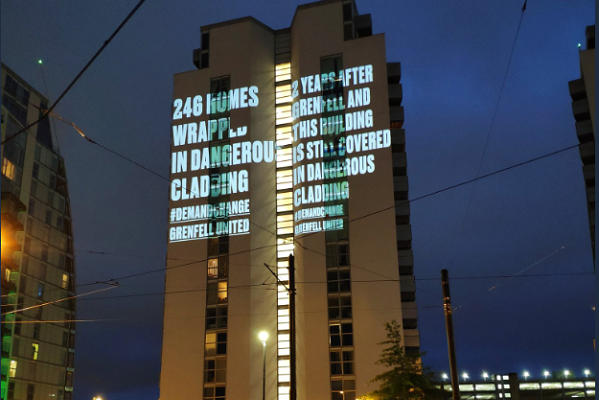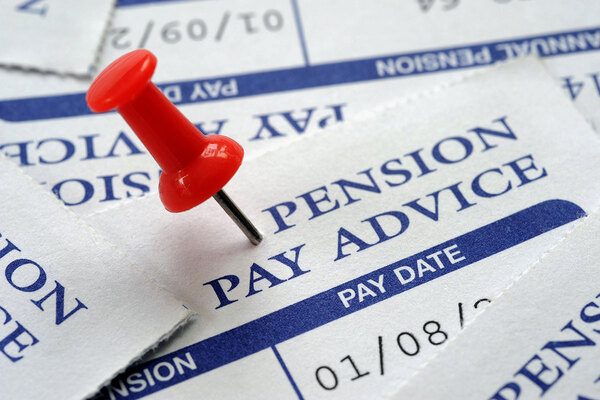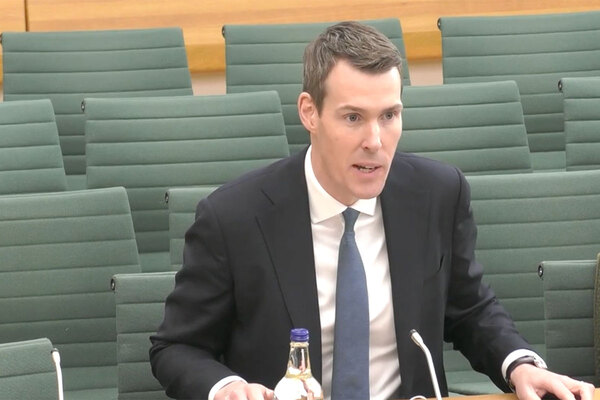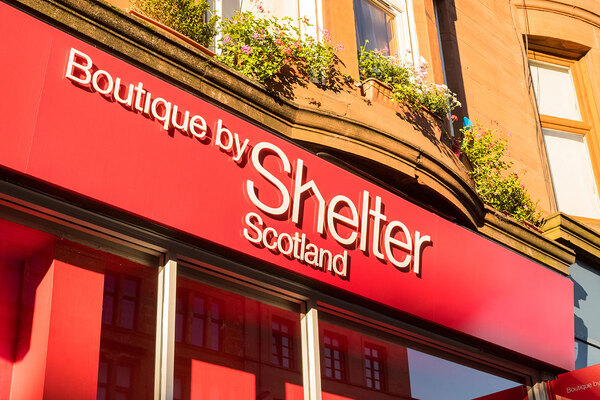You are viewing 1 of your 1 free articles
Are Social Housing Green Paper proposals on ice? We look at what has happened since last year
One year on from the publication of the Social Housing Green Paper, Inside Housing takes a look at what has – and what hasn’t – happened to make its proposals a reality
One year ago this week, the government published its long-awaited Social Housing Green Paper. This document, which was overdue, was supposed to be the “most substantial report of its kind for a generation” and deliver a “fundamental rethink of social housing in this country”.
But these lofty aims remain – as yet – unfulfilled.
A consultation on the paper closed in November, with a response and a potential white paper expected in spring. But as we pass the one-year anniversary, we are still waiting.
In June, Theresa May said an action plan to introduce the paper’s aims would be published in September. But it remains to be seen whether or not Boris Johnson will still make this a priority with the government focusing its attentions wholeheartedly on preparations for a no-deal Brexit.
Nonetheless, despite many of its core proposals remaining on ice, there have been some green shoots of progress over the past year. Here we assess what has changed – and what hasn’t – under each of the paper’s five chapter headings.
Empowering residents and strengthening the regulator
Picture: Getty
What did the green paper propose?
After extensive coverage of the ways Grenfell Tower residents complained about the fire safety of their homes and the stone wall of silence with which they were met, the Social Housing Green Paper was always going to have to say something about empowering residents.
It proposed “sharper teeth” for the regulator and planned a system of league tables where housing associations would be ranked by key performance indicators. It also suggested linking residents’ experiences of their landlords to the amount of government funding the housing association might receive in order to incentivise good practice.
What has happened since?
In March, the government launched a group aiming to give social tenants a voice on building safety. The Social Sector (Building Safety) Engagement Best Practice Group involves housing associations attending group meetings, with one resident per landlord discussing initiatives to keep residents informed.
A month later, however, the government was criticised for sidelining the tenant steering group it had been working with: A Voice for Tenants. The group said there had been “next to no dialogue” from government for four months.
League tables, meanwhile, are now unlikely to be introduced, sources familiar with the matter told Inside Housing earlier this year.
In a dubious landmark for resident empowerment, the past year also saw equity-linked landlord Westmoreland Supported Housing Association become the first to breach the Tenant Involvement and Empowerment Standard, after it evicted tenants without consulting or considering what would happen to them afterwards.
Effective resolution of complaints
Picture: Getty
What did the green paper propose?
A particularly galling fact about the Grenfell Tower fire is that residents’ attempts to raise concerns about safety before the blaze were ignored. The resolution of complaints was therefore a central plank of the green paper, which acknowledged that residents widely perceive the current process as “opaque, inaccurate and chaotic”.
There was little in the way of concrete proposals, but it did suggest establishing a ‘complaints code of practice’ for social landlords through the Regulator of Social Housing, including guidelines on timescales.
Much was made of the ‘democratic filter’, meaning tenants must go to a local elected official after exhausting their landlord’s complaints service or wait eight weeks to involve the Housing Ombudsman.
The green paper acknowledged this feature takes too long and “does not appear to work for residents”, and suggested scrapping it – but noted this would require primary legislation.
Additionally, it recognised residents are often unaware of the best way to escalate complaints and that the ombudsman is too slow, lagging well behind its six-month average resolution target.
What has happened since?
In short: not much. The government did publish a response to its consultation on “strengthening redress in the housing market” in January, which floated a New Homes Ombudsman and a ‘Housing Complaints Resolution Service’ to act as a “single point of access” to help people find the right ombudsman scheme, but nothing has been heard on these since.
The Housing Ombudsman made progress on its resolution times according to its 2018/19 report, but remains about three weeks behind its average target.
For its part, the National Housing Federation launched its Together with Tenants programme in February, aimed at making housing associations more accountable to residents.
At the same time, complaints resolution has arguably crept even further up the agenda after Metropolitan Thames Valley became the first landlord to fail to comply with an ombudsman order, while Sanctuary became the focus of intense scrutiny over its handling of tenant concerns over alleged poor services.
Tackling stigma and celebrating thriving communities
Picture: Getty
What did the green paper propose?
According to the green paper, stigma was the most consistent theme raised by tenants during consultations. To combat this, the government proposed launching a ‘best neighbourhood’ competition, which groups could enter in order to win funding for an event or street party.
Lip service was paid to the tenant-led ‘See the Person’ campaign, which aims to share positive stories about social housing tenants.
The paper also discussed the role design can play in reducing stigma, suggesting that planning guidance could be amended to support good design in the social housing sector.
Finally, in order to improve landlord-tenant relationships, the government proposed introducing key performance indicators to monitor whether landlords are providing good neighbourhood management.
What has happened since?
Considering the somewhat fluffy nature of the government’s proposals on stigma, it’s unsurprising that little has changed in the year since the green paper was published.
Design is the one area where some movement has happened: last month the government’s Building Better, Building Beautiful Commission published its interim report, which said beauty must be a condition of grant funding.
Outside of government, the See the Person campaign continues to combat the misleading stereotypes of social housing tenants.
However, if last month’s British Social Attitudes Survey is anything to go by, it is going to take a lot more than unfulfilled promises of bunting to reduce the stigmatisation that tenants face.
Ensuring homes are safe and decent
Picture: Grenfell United
What did the green paper propose?
The Social Housing Green Paper rightly identified concerns about safety in the aftermath of the Grenfell Tower fire as a major concern for tenants. Despite this, the document somewhat strangely dedicated this chapter the least amount of space. Just three pages were committed to the topic, with many dedicated to blowing the government’s trumpet for what it had already done and little by way of new policy proposals.
There were only two concrete ideas. First was a promise to introduce “a new programme to support residents to engage with their landlords on issues of building safety in social housing”. This was amid references to the work in progress to implement the findings of Dame Judith Hackitt’s review of building regulations.
Second, it also noted that the Decent Homes Standard had not been reviewed since 2006, and said that it should be looked at again “to consider whether it is demanding enough and delivers the right standards for social housing alongside other tenures”.
What has happened since?
There has been no progress whatsoever regarding a review of the Decent Homes Standard, neither has any new government funding been directed to bringing the 13% of social homes that do not meet the existing standard up to scratch.
Nonetheless, the Homes (Fitness for Human Habitation) Act did make it onto the statute books in April. Proposed by Labour’s Karen Buck and drafted by social housing lawyers, this bill eventually attracted government support and may make a substantial difference by giving residents the power to sue their landlords if their homes do not meet the standard.
Dame Judith’s proposals will be introduced via legislation to be tabled this year, the government promised in June – although it remains to be seen if this promise will be kept now that Mr Johnson’s new cabinet has control of the legislative timetable.
Finally, the aforementioned Social Sector (Building Safety) Engagement Best Practice Group was introduced in March to give eight social landlords the chance to talk to tenants about building safety. The impact this fledgling group will have remains to be seen.
Expanding supply and supporting homeownership
Picture: Getty
What did the green paper propose?
Supporting local authorities to build more homes was a key part of the paper’s section on supply. Addressing the historically low levels of council development, respondents to the consultation identified three key areas that blocked councils from building: restrictions on borrowing, uncertainty around rent levels, and limitations on how they can spend Right to Buy receipts.
At the time, the government had announced an extra £1bn in borrowing for councils.
A consultation on Right to Buy receipts was also published alongside the green paper, with the government saying it would consider allowing councils to hold onto receipts for longer.
Getting housing associations to build more affordable homes and providing them with longer-term certainty over funding was another key part of the green paper’s section on development.
This included suggestions of driving Homes England’s strategic partnership programme and bringing back the government’s Affordable Homes Guarantee Scheme. The green paper came off the back of some giveaways for the sector in the year leading up to it. In July last year, the government had just announced its first eight strategic partners, handing them £590m to go towards their building ambitions, while £9bn had been set aside for the Affordable Homes Programme a year earlier.
Other themes raised in the paper around development included supporting the development of council housebuilding companies, driving community-led housing projects, and ensuring existing social housing was being used effectively.
This section of the green paper also focused on the theme of ensuring that social housing was a springboard to homeownership. This included plans around boosting shared ownership numbers but also the launch of its £200m pilot in the Midlands to extend the Voluntary Right to Buy to housing association tenants.
What has happened since?
The past 12 months has seen some significant progress in creating a landscape in which local authorities can build at a greater level. Just months after the green paper, Ms May announced that the government would be scrapping the borrowing cap in a bid to boost council housebuilding.
Plans are already being drawn up by some councils to take advantage of the additional Housing Revenue Account freedoms, with local authorities like Liverpool and Sheffield outlining ambitions. The number of councils creating their own housebuilding companies is also on the rise, as many councils, including Milton Keynes, are looking to launch companies.
Since last year’s green paper there have been three more rounds of strategic partnership announcements, taking the full level of spending to £1.74bn between Homes England’s 23 partners. This July, existing strategic partners were given the opportunity to bid for an additional £1bn when the current strategic partnership funding round ends. In March, as part of the Spring Statement, then-chancellor Philip Hammond announced he would create a £3bn Affordable Homes Guarantee Scheme to support the delivery of affordable homes.
The Right to Buy consultation has seemingly been kicked into the long grass. The consultation closed on 9 October and, nearly a year on, there is yet to be any form of report or conclusions published by the Ministry of Housing, Communities and Local Government.
The Voluntary Right to Buy pilot was launched in August last year, and a total of 9,000 housing association tenants entered the ballot by November. There have been a number of housing association residents that have secured ownership of their properties through the scheme. However, on the whole, the Right to Buy pilot has been blighted with a low take-up. In May, Inside Housing reported that more than half of the tenants successful in the ballot initially failed to apply to buy their home.
MHCLG's comment
An MHCLG spokesperson said: “Providing quality and fair social housing is a priority for the Government, which is why we’ve taken action to tackle segregation, are working to ensure residents have a stronger voice when engaging with their landlords on building safety, and are backing councils and housing associations to deliver more social homes – potentially helping to double delivery to around 10,000 new homes a year by 2021/22.”
Social Housing Green Paper: full coverage
All our Social Housing Green Paper coverage in one place:
Green paper measures are not enough to create May’s ‘new generation’ of council homes Green paper proposals are welcome but much more is needed to support councils to build, writes John Bibby
Green paper shows ministers now see associations as trusted partners Focusing on the failure of the green paper to address supply misses the point, writes Boris Worrall
Government should focus on building on what is already strong Philippa Jones considers the Social Housing Green Paper through a slightly different lens
We need more than a week of delayed announcements bundled together Jules Birch reflects on the government’s ‘Housing Week’ announcements
The regulator should monitor how associations assist homeless people Government announcements this week are positive, but any enhanced role for the English regulator should include looking at homelessness prevention work, argues David Bogle
The regulator’s role should be limited to dealing with systemic failures Julian Ashby suggests the Housing Ombudsman Service should deal with all complaints
The green paper shows ministers are in listening mode Despite some glaring omissions, the government appears to be in listening mode and it is important the sector takes advantage, argues Emma Maier
A short history of social housing league tables Attempts to create league tables for housing associations are nothing new. Mervyn Jones looks at how they have worked in the past
League tables could prove blunt and counter-productive, sector warns Housing figures criticise government proposals to measure social landlords against performance indicators
Government ‘must decide how proactive regulator should be’ on consumer standards Ministers now face a dilemma over the regulator’s focus, sector figures say
The Green Paper: a golden opportunity missed? Melanie Rees assesses the Social Housing Green Paper against recommendations drawn up by the Chartered Institute of Housing and finds the government comes up short
Longer strategic partnerships and guranteed debt to boost social housebuilding The Social Housing Green Paper outlines key ways of boosting supply
The green paper is remarkable progress but it is still not enough The green paper suggests the government appears to be re-writing much of its policy since 2010, but more needs to be done, writes Jules Birch
Green paper marks a ‘milestone’ on resident involvement The government’s recognition residents need clear information is to be welcomed, now it up to the sector to embrace tenant involvement, writes Paul Hackett
Ministers consider stock transfer programme to community-led associations The stock transfer programme could be revived under proposals in the housing green paper
Access to housing grant could be tied to new league tables Grant could be awarded according to how well landlords meet performance indicators, the paper suggests
Ofsted-style regulation of tenant services proposed The government is considering expanding the Regulator for Social Housing’s remit to intervene over tenant services and give it a more “proactive approach to enforcement”
Government proposes dropping one-for-one Right to Buy replacement commitment A consultation paper published alongside the green paper proposes a broader measurement to replace the one-for-one pledge
A list of recent housing policy U-turns The green paper confirms yet more housing policy U-turns from the government, which has spent the past two years dropping policy ideas developed under the David Cameron government. Here is a rundown of the major changes in policy direction
Sector welcomes green paper but calls for more ‘ambitious investment’ Reaction to the proposals, from the National Housing Federation, Chartered Institute of Housing and more
Morning Briefing: reaction to green paper announcements how the media reported the proposals trailed by the government overnight
Government drops plans to force councils to sell higher-value stock The government drops plans to force councils to sell higher value homes
League tables and ‘sharper teeth’ for regulator in social housing green paper Ministers reveal some of the things in the paper ahead of its publication
Grenfell survivors: green paper does not go far enough survivors of the Grenfell Tower fire have said the measures published in the Social Housing Green Paper do not do enough to rectify issues in the social housing sector




